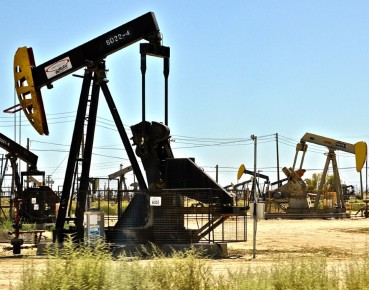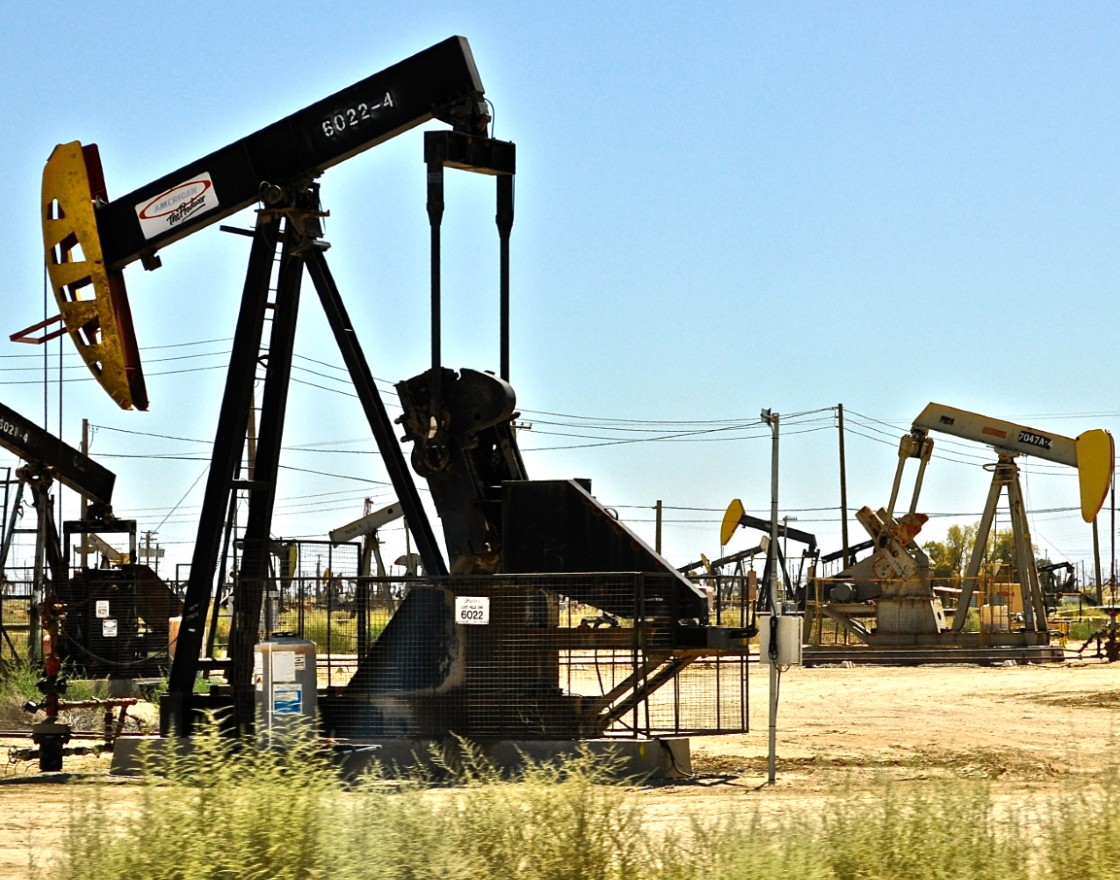
(ElMelindo, CC BY 2.0)
This deal primarily refers to Russia and Saudi Arabia, which during the previous negotiations failed to agree on production restrictions. An „oil conflict” erupted, with Saudi Arabia significantly increasing production and, as a result, oil prices plummeting. American shale oil production was hit hardest. The whole story, as expected, heavily engaged the US President Donald Trump, who mediated between Moscow and Riyadh, asking them to reduce production. An agreement has now been reached between OPEC+ members (OPEC countries plus 10 other major manufacturers, including Russia, Mexico and Kazakhstan) to reduce production by 10 million barrels a day starting on May 1st. But while unofficial sources say the largest producers, Russia and Saudi Arabia, agreed, not all OPEC+ group members are happy about the cuts —Mexico refused to agree. Finally, all countries agreed that Mexico can cut the production by only 100,000 barrels a month and the US will compensate what Mexico cannot add to the proposed cuts.
There are many factors in the oil price
The first factor affecting the price of oil is, of course, the spread of coronavirus worldwide. Almost non-existing air traffic, shutdown factories, and lockdown in many countries are significantly reducing oil demand. When talking about oil production we talk about a rather small club of producer countries. Some of them are members of a special group called OPEC („Organization of Petroleum Exporting Countries”): Algeria, Angola, Congo, Equatorial Guinea, Gabon, Indonesia, Iraq, Iran, Kuwait, Libya, Nigeria, Saudi Arabia, United Arab Emirates and Venezuela. The de facto leader of this group, the „chief” who takes the major decisions, is Saudi Arabia. OPEC is a cartel that was created in the 1960s to protect its members from major players, that is, powerful the US, British and Dutch oil companies. OPEC countries together produce about 44 per cent of world oil.
At the beginning of negotiations, Russian President Vladimir Putin has not agreed to a further decline in production despite the coronavirus pandemic and the global decline in demand, to which Saudi Arabia responded with a frantic opening of the faucets, to flood the oil market with cheap, raw materials and thus to capture some of the third-party market shares. News of a real massacre in the market, where oil prices have fallen to their lowest levels since the beginning of 2002, has already been shared by everyone, but this time without enthusiasm, because during the reign of the hashtag #StayHome, there is little interest in petroleum products.
The second factor is that different types of raw material play an important role because the lower quality (measured in terms of density and viscosity) entails higher processing costs. Depending on geographical origin, the quality of “black gold” can vary greatly, but this is only part of the problem.
The third important factor is the delivery date. Namely, the prices mentioned in the media most often refer to futures contracts, liquid financial instruments with a delivery date in the (near) future. It’s the favourite toy of traders (both small and big ones) who have never touched the oil.
In the field, things look significantly different, due to specific circumstances. This is primarily due to the unpleasant combination of record-high (the US) production, lower demand, and extremely high inventories. According to the latest data released by the EIA (Energy Information Administration), a statistical arm of the US administration responsible for energy markets, the total US crude oil reserves (excluding White House strategic reserves) reached 469 million barrels at the end of March. The difference to the absolute record (536 million barrels in March 2017) is still increasing, but things have to be put in the right context. At the beginning of 2017, the US production was around 9 million barrels a day, while today it is a record of 13 million barrels a day. At the same time, the market weakened by coronavirus simply cannot digest that much production, and, quite logically, surpluses accumulate rapidly. However, there is less storage space for surpluses.
Fresh estimates announce a dramatic drop in global demand for the second quarter — estimates vary between 12 and 20 million barrels a day (six times the decline in the Q1’2009, amid the financial crisis). In other words, the equivalent of the total American production, which currently holds primacy over Saudi Arabia, will suddenly become a surplus. So, we should also observe the continuous growth of stocks over the past weeks. According to various estimates, the world currently has a maximum of 1.8 billion barrels of available storage capacity, which means that at this rate of production, the warehouses will be full by the end of July.
The small oil producers look for innovative solutions
The situation of many independent (small) debt-racking producers (capital projects of this type require huge investments and cannot be stopped in an instant) is extremely unpleasant, and they desperately need some income to stay afloat. And above all, they have nowhere to store fresh produce, especially if they are deprived of access to oil pipelines. So, unconventional ideas are already emerging, such as storing crude oil in empty wagons. Surprisingly, it makes some sense, as the coronavirus has significantly weakened demand for land transport services, and the cost of renting an oil wagon has almost halved in recent months. According to some calculations, taking into account rental prices and storage capacity, this would mean that a barrel of oil can be stored in such an unconventional way for as little as the USD1-2 per month. Of course, there are some obstacles, mostly regulatory ones (increased security requirements), but with overcrowded warehouses, oil pipelines and full tankers already floating across the Atlantic, from the coasts of Europe to North America and vice versa, waiting for better times for oil workers, such solutions seem to be only a matter of time. The alternative is even worse and involves negative prices. There is simply no other way out.
Small producers are desperate to continue production, hoping that the current situation will not last too long, because shutting down (and then re-starting production) is technically very demanding, and an expensive process that for many is a path with no return. The shutdown of production in their eyes is a one-way ticket to bankruptcy, followed by the liquidation of assets to settle debts and other creditors (bond buyers), while shareholders are left with crumbs at best. Because of all the above, Bloomberg news relentlessly reminds of a very realistic scenario of negative crude oil prices, at least in the more obscure market segments, where relatively small quantities of poor-quality raw materials are traded.
Russia, on the other hand, sees everything related to oil (and gas) as an existential battle. The fact that the United States has been so engaged in stopping the North Stream 2 pipeline has put Moscow in one of the most extreme fighting moods and may now try, even at the cost of its stability, to push the US oil companies. Ultimately, the weakening of the US oil influence would be good news in some respects both in Moscow and Riyadh, but there is no evidence that this is a coordinated action, rather than things overlapping in the fight for their interests (let’s not forget that Saudi Arabia is actively imagining Russian markets in their business models, and especially in Europe, where they now offer great discounts).
What will happen in the coming days and weeks? A lot will depend on the further course of the coronavirus epidemic. If the virus situation does not stabilize, prices will continue to fall, and with them the global economy, as we have already seen on stock exchanges around the world. Most observers do not believe that such a large-scale, coordinated mass reduction effort can be carried out, or at least not in the short term, while analysts from Goldman Sachs said that the OPEC+ move was “too little, too late”.
Vedran Obućina is an analyst and a journalist specializing in the Croatian and Middle East domestic and foreign affairs. He is the Secretary of the Society for Mediterranean Studies at the University of Rijeka and a Foreign Affairs Analyst at The Atlantic Post.


